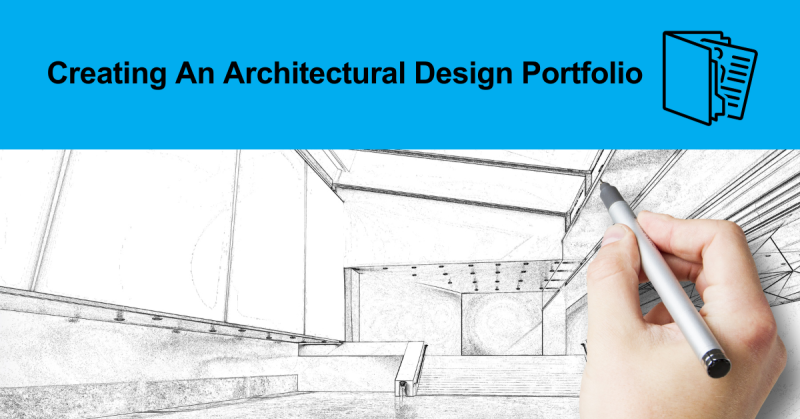
Your Portfolio is an important aspect to demonstrate your career to date and can increase or decrease your chances of obtaining your next dream job.
An architectural portfolio is a unique body of work that demonstrates your experience as a Designer or Documenter. A portfolio should be used to showcase your best work that you can share with potential employers.
It provides an accurate reflection of your architectural skills, your design approach, technical abilities, and how you have evolved in your career.
Types of Portfolio:
There are 2 different types of Portfolios - the short and the long Portfolio. If you’re looking for a new job, it is ideal to submit your CV, Cover Letter with a short Portfolio. Your short Portfolio with your CV and shouldn’t be longer than 8-10 pages and no larger than 8MB in size.
Once you have received an interview invite, that’s when your long Portfolio is shown. You’ll be able to demonstrate more relevant work examples and prove you’re the right fit for the job in terms of technical skills. Depending on your level of seniority, your portfolio will include different types of work.
As an architectural graduate. Your portfolio should consist of recent projects at different stages and show design and full construction drawings ideally not university work unless exceptional concept designs. For more senior Architects include from pre-design through to the construction stage. Ideally, the last 6 years unless it is crucial to the position. Stick with your best and most recent work. If you are an Interior Designer include a concept, mood board, documentation and finished photo.
Your portfolio It’s all about Quality over Quantity. For your short Portfolio, present your best and most recent work across 8-10 pages maximum. A Full Portfolio should consist of a variety of projects, sectors, stages, hand sketches, conceptual designs, detailed drawings, and design skills. Depending on the role, your portfolio should demonstrate that you are the right candidate for the position.
Structure of Portfolio:
Your portfolios should be in chronological order and start with your most recent work. Present one project at a time. For each project provide a short description to cover project type, location, $ value and your role and responsibilities, and software used. Use no more than 2 fonts, ideally Arial, Times New Roman, or Calibri.
How to present a Portfolio:
PDF Portfolios are quick to create and you can then easily save two versions, short and full version.
Hosting sites: There are free options such as Wix, Issuu or similar paid options and there is the printed version that you might take to an interview. Note this can be expensive and you will need to update in the future.
As this is an Architectural portfolio also use your design software. Adobe InDesign, Photoshop and Illustrator. First impressions count so keep the look and content easy to read.
Here are key tips to follow:
1. Design Layout. Create a consistent design concept for all the pages of your portfolio. This will make it easier for the client to understand your story and focus on the information they need. Determine a font and stick to it don’t chop and change
2. Select your best projects and most recent work at 8 to 10 pages maximum! These projects should best reflect your work and skills.
3. Order. The projects presented should be in chronological order starting with the most recent and showcased one project at a time.
4. Listen to the audience. Depending on the architectural firm, highlight projects that are more relevant to them. Focus on the ones that you think will add value to them.
5. Less is more. Don’t be afraid of white space. Overloaded portfolios are hard to read and might get ignored.
6. Showcase your skills. They can include the following:
•Hand sketching and drawing (freehand / digital). As you work through a project this may lead to construction drawings showing you have evolved as an architect/ designer.
•Model making – 3D Printing
•Construction detailing (and knowledge) Software documentation skills
•Architectural visualization (showcasing atmosphere, story, narrative)
•Versatility (showing other interests such as photography, sculpture, furniture design, film making)
•Visualisation (software and digital skills)
•Industry involvement (blog, published work, lectured)
•3D modelling (general software skills)
7. Update frequently. Your portfolio is a living document that grows and changes together with you. Updating every six months to a year is ideal so you remember what you have done Keep your projects organized and be prepared for every job opportunity that you may come across when Arcadia Recruitment may call you.
8. Be honest. Providing accurate and honest representations of your work allows others to have realistic expectations of your capabilities. It helps avoid misunderstandings or disappointments in the future.
Arcadia Recruitment are specialist in Architecture, Design and Planning in Brisbane if you would like help with finding your new role, please feel free to get in touch for a confidential discussion.
Caroline Sanders – Director of Arcadia Recruitment